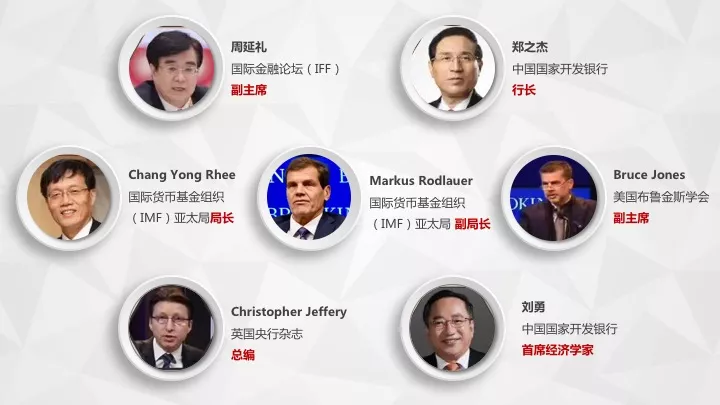HOME>NEWS CENTER>Media Reports
The 5th Anniversary of the Belt and Road | How do the central banks of the 30 countries look? The IFF survey report reveals your secret!
AUTHOR:IFF
FROM:IFF
TIME:2018-06-08
In 2018, the fifth anniversary of the “Belt and Road Initiative”!
Looking back on these five years, the “Belt and Road Initiative” is an important measure for China to expand and deepen its opening up. It has not only been widely recognized and supported by Chinese and overseas Chinese, but also has strengthened the efforts to strengthen Asia, Europe, Africa and the rest of the world. The responsibility of mutual benefit cooperation!
In 2018, on the occasion of the fifth anniversary of the “Belt and Road Initiative”, the International Finance Forum (IFF) united with the International Monetary Fund (IMF), the Brookings Institution of the United States, the British Central Bank magazine and the Silk Road International Alliance (SRIA). The “One Belt, One Road, Five-Year Survey Report” was released globally during the World Bank and IMF Spring Meeting in Washington!
At the beginning of this year (January-February 2018), the report sent invitations to the central banks of 30 representative countries and regions along the “Belt and Road” to collect 26 valid questionnaires! The “One Belt and One Road Five-Year Survey Report” aims to summarize the achievements, experience and existing problems China has achieved in “bilateral” and multilateral cooperation in the five years since the construction of the “Belt and Road”!
Zheng Zhijie, President of the China Development Bank, delivered a keynote speech on the “Belt and Road Initiative” at the press conference. Vice Chairman of IFF Zhou Yanli, Director of the Asia-Pacific Bureau of the International Monetary Fund (IMF), Li Changzhen, Markus Rodlauer, Deputy Director of the Asia-Pacific Bureau of the International Monetary Fund (IMF), Bruce Jones, Vice President of the Brookings Institution of the United States, Senior Research Fellow of the Brookings Institute David Dollar of the US Treasury Department's Economic and Financial Envoy in China, Christopher Jeffery, Editor-in-Chief of the Central Bank magazine, and Liu Yong, Chief Economist of the China Development Bank, attended and delivered an important speech!


The fifth anniversary of the “Belt and Road”, the central banks of all countries say!
The influence of the “Belt and Road Initiative” initiative
In the past: More than half of the central banks surveyed have a positive attitude towards the “Belt and Road Initiative”; in the future, 92% of the central banks surveyed believe that the “One Belt, One Road” initiative will boost their economies in the next five years!
Recognition of the “Belt and Road Initiative” initiative
50% of the central banks surveyed believe that the “Belt and Road Initiative” is more important than the domestic banking project; 21% of the central banks surveyed believe that the “Belt and Road Initiative” is better than the worldwide banking project; 14% of the central banks surveyed believe that the “Belt and Road Initiative” is better than the regional Sex bank project!
Participation in the “Belt and Road Initiative” initiative
Although central banks are not the main drivers of the One Belt One Road strategy, 41% of the central banks surveyed actively promote and promote the “Belt and Road Initiative” initiative to their governments/related institutions; 47% of the central banks surveyed believe that they have already developed Participate in the implementation plan of the “Belt and Road Initiative”!
The driving force of the “Belt and Road Initiative” initiative
In terms of “funding use”, more than half (55%) of the central banks surveyed believe that “One Belt, One Road” funds are more used for “large” and “super large” infrastructure projects;
On the “source of funds”, 44% of the central banks surveyed said that “China's development banks and state-owned banks” are the main sources of funds for the “Belt and Road Initiative”. The proportion of multilateral institutions supported by China is relatively high, and private enterprises are also indispensable. Less;
